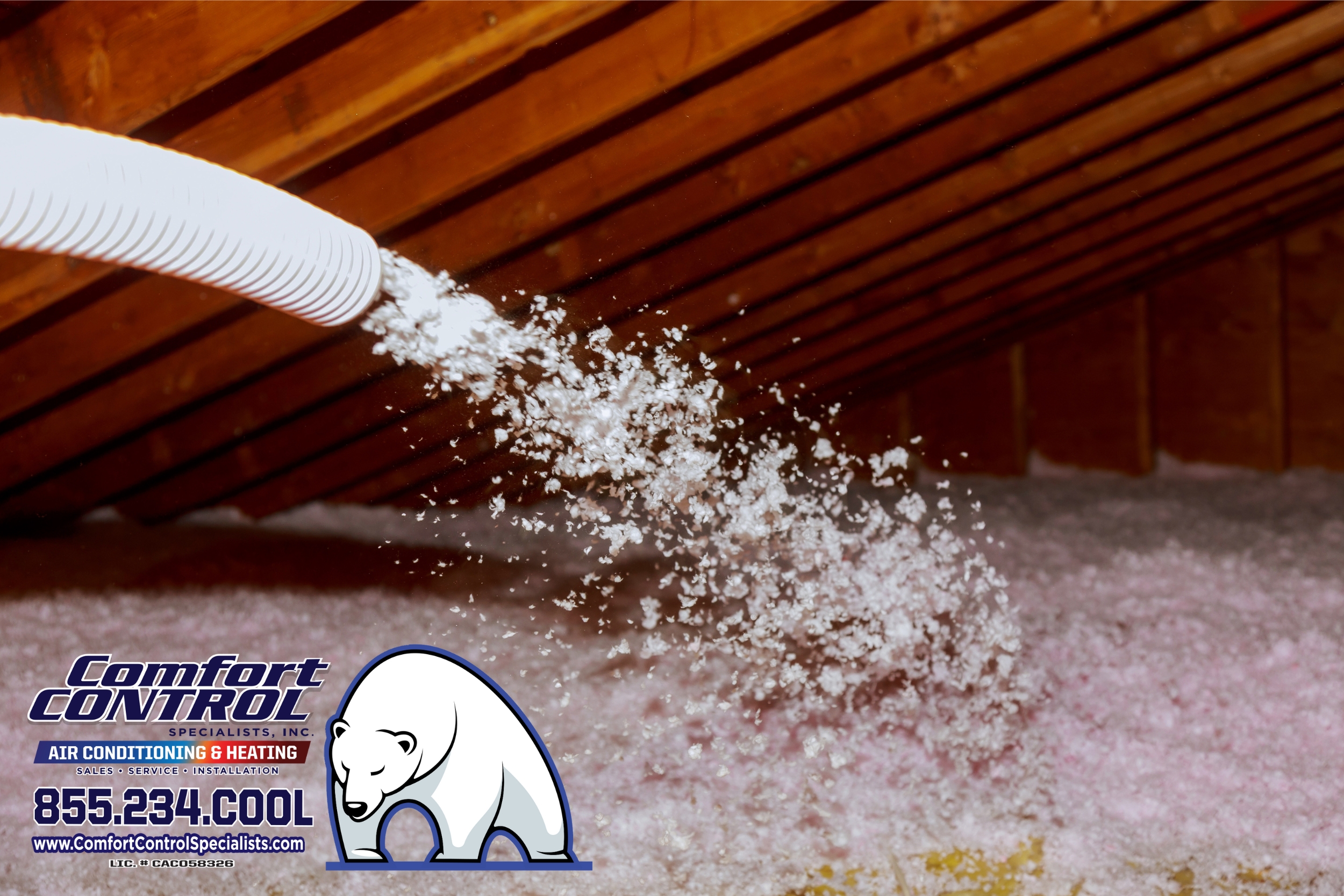[vc_row][vc_column][vc_column_text]
Choosing the Best Attic Insulation in Florida and Maintenance Guidelines
[/vc_column_text][/vc_column][/vc_row][vc_row][vc_column][vc_column_text]
Florida, known for its scorching summers, demands smart home cooling strategies to maximize comfort and minimize energy bills. One such strategy often overlooked is attic insulation. This article will guide you through the importance of attic insulation, the best options available for Florida residents, and the ideal maintenance schedules to ensure optimal AC efficiency.
The Science of Heat Transfer and Insulation
Before diving into the types of insulation, let’s understand the science behind heat transfer and how insulation works. Three main methods of heat transfer exist: conduction, convection, and radiation. Conduction is heat traveling through a solid material, convection is heat circulating through liquids and gasses, and radiation is heat transferring via electromagnetic waves.
Insulation works to slow down these heat transfer processes, especially conduction and convection. By doing so, it helps keep your home cool in summer by preventing hot air from outside entering your home and warm in winter by trapping the heat inside.
The Importance of Attic Insulation in Florida
In a hot climate like Florida, a poorly insulated attic can significantly affect your home’s indoor temperature, putting additional strain on your AC system. Heat naturally moves from a warm area to a cool one. During summer, the sun heats your roof, causing the temperature in your attic to rise. If your attic is poorly insulated, this heat can easily infiltrate your living spaces, making your AC work harder to maintain a comfortable temperature. The right attic insulation can limit this heat infiltration, improving your home’s comfort and the efficiency of your AC system.
Choosing the Right Attic Insulation
Insulation effectiveness is measured in R-values, representing its resistance to heat flow. The higher the R-value, the more effective the insulation. Florida’s hot climate requires insulation with an R-value between R30 and R38.
- Fiberglass Insulation: One of the most commonly used insulations, fiberglass comes in batts or loose fill. It’s relatively inexpensive, non-flammable, and resistant to moisture. It has an R-value of approximately R2.9 to R3.8 per inch of thickness.
- Cellulose Insulation: Made from recycled newsprint and treated for fire resistance, cellulose insulation offers an R-value of approximately R3.1 to R3.8 per inch. It can be blown into attics as loose fill or wet-sprayed for a more thorough coverage.
- Spray Foam Insulation: Spray foam insulation expands after application, filling small gaps and crevices, offering excellent air sealing properties. Its R-value ranges from R3.5 to R6.5 per inch, making it a highly efficient, though more costly, option.
- Radiant Barrier Insulation: Particularly effective in hot climates, radiant barriers are installed beneath the roof to reduce radiant heat transfer, thereby lowering attic temperatures. They are often used in combination with other insulation types for maximum effect.
The best choice depends on your specific needs, budget, and the condition of your existing insulation.
Insulation Maintenance and Replacement
Typically, insulation doesn’t require a lot of maintenance, but it does need to be inspected periodically, particularly after severe weather events. Look for signs of dampness, mold, or pest infestation, which can reduce its effectiveness. If your energy bills are rising without a corresponding increase in energy rates or usage, it might be time to inspect your insulation.
 Most insulation materials last for about 15 to 20 years. If your insulation is nearing this age or if you notice signs of deterioration, consider replacing it. While you can inspect your insulation yourself, hiring a professional can ensure a more accurate assessment and safe handling of materials, particularly if mold or pests are present.
Most insulation materials last for about 15 to 20 years. If your insulation is nearing this age or if you notice signs of deterioration, consider replacing it. While you can inspect your insulation yourself, hiring a professional can ensure a more accurate assessment and safe handling of materials, particularly if mold or pests are present.
Impact on AC Efficiency and the Best Time for Maintenance
Improving your attic insulation can significantly enhance your AC’s efficiency. In fact, the U.S. Department of Energy estimates that homeowners can save up to 15% on heating and cooling costs by properly insulating their homes.
Ideally, insulation maintenance should be done before extreme weather hits – in late spring or early fall. This ensures your home is well-prepared for the hot summer or the cooler winter months.
Conclusion
Choosing the right attic insulation and keeping up with regular maintenance can help you beat the Florida heat. Not only will it make your home more comfortable, but it can also lessen the burden on your AC system and potentially lower your energy bills. Stay cool and energy efficient with the best attic insulation for your Florida home.
If you live in Odessa, Keystone, Spring Hill, Tarpon Springs, Land O Lakes, Oldsmar, Brooksville, or the surrounding areas, please don’t hesitate to contact the Comfort Control Specialists for a comprehensive AC inspection and tune-up or AC repair.[/vc_column_text][/vc_column][/vc_row]



